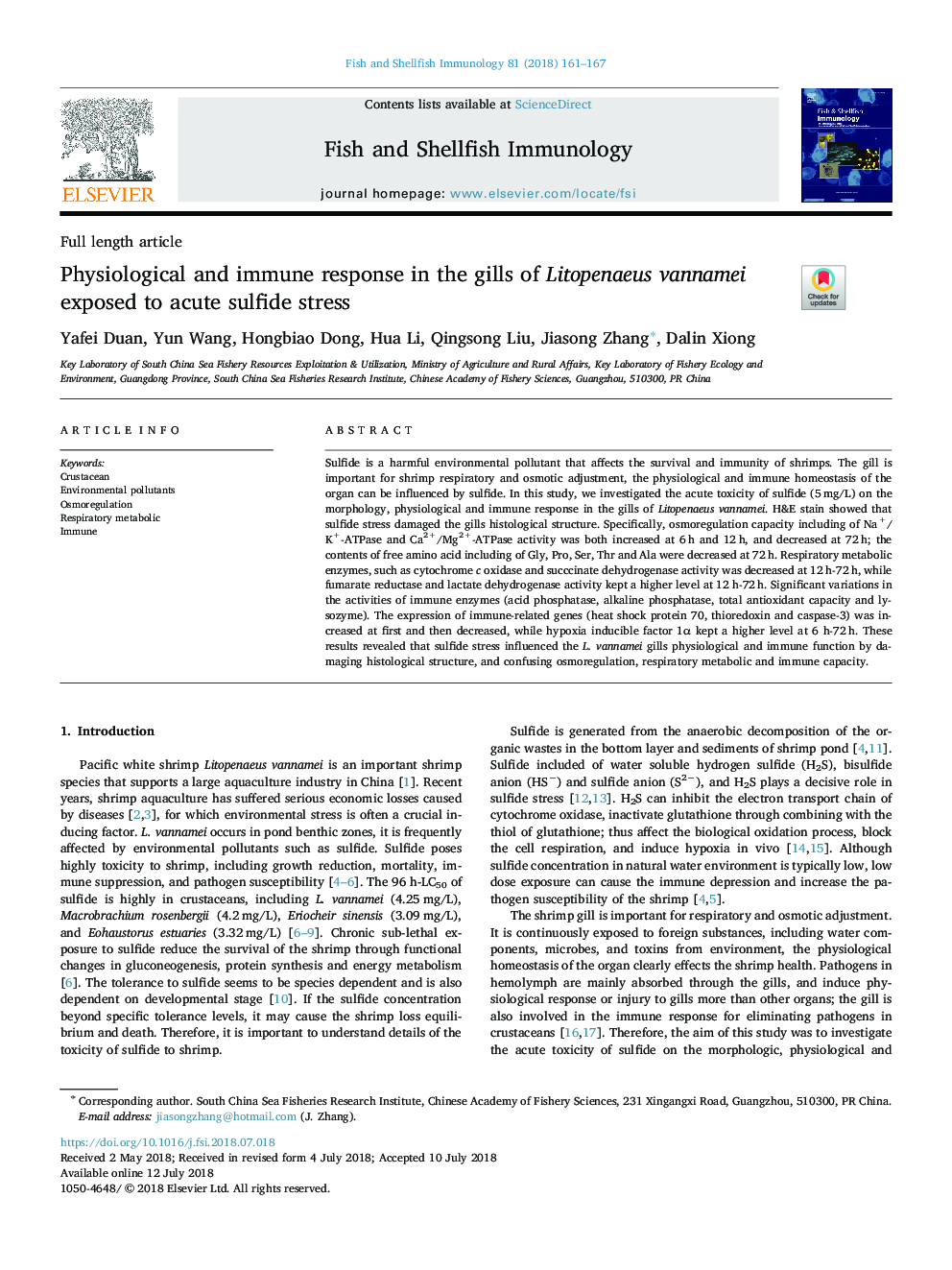| Article ID | Journal | Published Year | Pages | File Type |
|---|---|---|---|---|
| 8498118 | Fish & Shellfish Immunology | 2018 | 7 Pages |
Abstract
Sulfide is a harmful environmental pollutant that affects the survival and immunity of shrimps. The gill is important for shrimp respiratory and osmotic adjustment, the physiological and immune homeostasis of the organ can be influenced by sulfide. In this study, we investigated the acute toxicity of sulfide (5â¯mg/L) on the morphology, physiological and immune response in the gills of Litopenaeus vannamei. H&E stain showed that sulfide stress damaged the gills histological structure. Specifically, osmoregulation capacity including of Na+/K+-ATPase and Ca2+/Mg2+-ATPase activity was both increased at 6â¯h and 12â¯h, and decreased at 72â¯h; the contents of free amino acid including of Gly, Pro, Ser, Thr and Ala were decreased at 72â¯h. Respiratory metabolic enzymes, such as cytochrome c oxidase and succcinate dehydrogenase activity was decreased at 12 h-72â¯h, while fumarate reductase and lactate dehydrogenase activity kept a higher level at 12 h-72â¯h. Significant variations in the activities of immune enzymes (acid phosphatase, alkaline phosphatase, total antioxidant capacity and lysozyme). The expression of immune-related genes (heat shock protein 70, thioredoxin and caspase-3) was increased at first and then decreased, while hypoxia inducible factor 1α kept a higher level at 6 h-72â¯h. These results revealed that sulfide stress influenced the L. vannamei gills physiological and immune function by damaging histological structure, and confusing osmoregulation, respiratory metabolic and immune capacity.
Related Topics
Life Sciences
Agricultural and Biological Sciences
Aquatic Science
Authors
Yafei Duan, Yun Wang, Hongbiao Dong, Hua Li, Qingsong Liu, Jiasong Zhang, Dalin Xiong,
